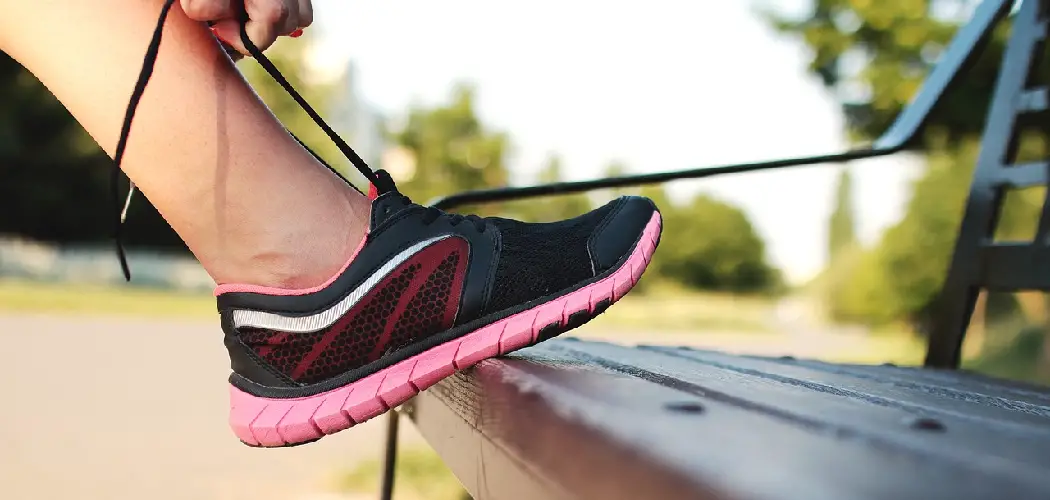If you struggle with flat feet, you know the importance of having good shoes. Even more important? How those shoes are laced up. Improper lacing can cause problems for people with flat feet, so it is crucial to do it correctly. Here is a guide on how to lace running shoes for flat feet.
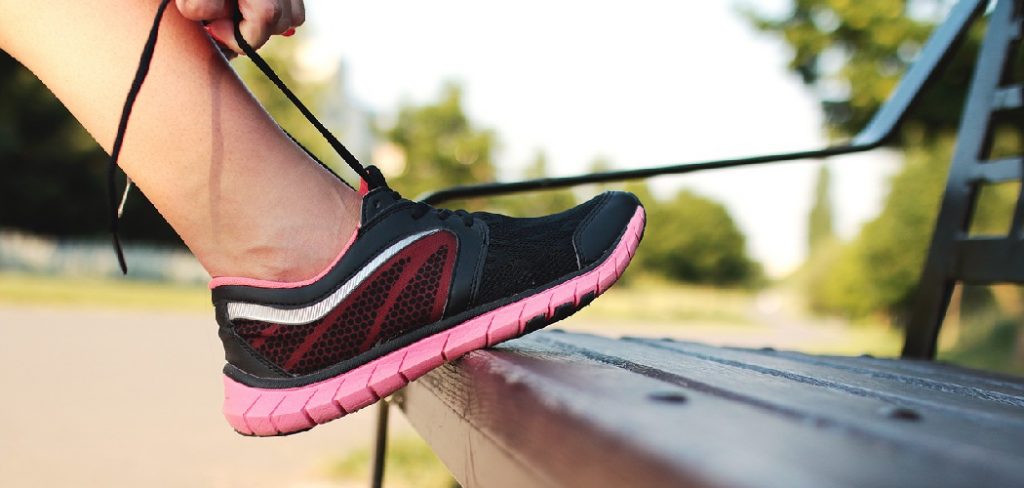
It can be hard to lace running shoes for flat feet because of how the shoes are designed. Most shoes are not made with flat feet in mind, so it can be challenging to find a way to lace them up that provides the support you need.
Summary: Running shoes for flat feet should be carefully laced to ensure a snug, secure fit. There are several lacing techniques that can help individuals with flat feet find the best fit. The “Web Lacing” method can create extra comfort for those with wider feet by using an extra pair of eyelets for additional support. Additionally, longer shoe laces provide ample room to customize the fit and minimize discomfort from pressure points.
What Are Flat Feet?
Flat feet are a condition in which the foot’s arch is depressed, and the sole is almost entirely in contact with the ground. This occurs because the muscles that support the arch are weak or inactive. As a result, people with flat feet often experience pain in the ankles and feet. The condition can also cause problems with posture and make it difficult to walk or run.
If you have flat feet, it is important to wear shoes that support the arch of your foot. Lacing your running shoes in a certain way can help to improve the support they provide.
Ways to Tie Your Laces
There are many different ways to lace your running shoes, and it may take some experimentation to find the way that works best for you. However, if you have flat feet, here are a few ways to lace your shoes that may help:

1. Flat Feet Lacing:
This method is designed to provide extra support for your feet. Cross the laces over the top of the foot and tie them together in a knot. This will help keep the shoe in place and prevent sliding off your foot.
2. Double Loop:
This method creates a loop around the ankle, which can help to provide extra support for flat feet. First, cross the laces over the top of the foot and tie them together in a knot. Then, take the laces and wrap them around the ankle, creating a loop. Finally, tie the laces together in a knot on the inside of the shoe.
3. Ankle Strap:
If you find that your shoes still slip off your feet, you may want to try using an ankle strap. This will help keep the shoes in place and prevent them from slipping off your feet.

4. Runners Loop for Heel Slipping:
This method is designed to help prevent heel slipping. First, cross the laces over the top of the foot and tie them together in a knot. Then, take the laces and wrap them around the heel, creating a loop. Finally, tie the laces together in a knot on the inside of the shoe.
5. Lace-Up Boots:
If you are struggling with heel slipping in your running shoes, you may want to try wearing lace-up boots instead. This will help keep the shoe in place and prevent slipping off your foot.
6. Diagonal Lacing for Toe Pain:
If you are experiencing toe pain, you may want to try diagonal lacing. This method provides extra support for the toes. First, cross the laces over the top of the foot and tie them together in a knot. Then, take the laces and place them diagonally up the shoe towards the big toe. Finally, tie the laces together in a knot on the inside of the shoe.
7. Wide Feet Lacing:
If you have wide feet, you may want to try a lacing method that spreads the tension across the shoe. This will help prevent the sides of the shoe from digging into your feet. First, cross the laces over the top of the foot and tie them together in a knot. Then, take the laces and lace them up the side of the shoe, spacing them out evenly. Finally, tie the laces together in a knot on the inside of the shoe.
8. Lace-Up Shoes:
If you are struggling with fit or comfort in your running shoes, you may want to try wearing lace-up shoes instead. This will help ensure a perfect fit and prevent the shoe from slipping off your foot.
9. Lace shortened:
If you find that your laces are too long, you can shorten them by tying a knot in the middle. This will help keep the laces from bunching up and make them easier to manage.
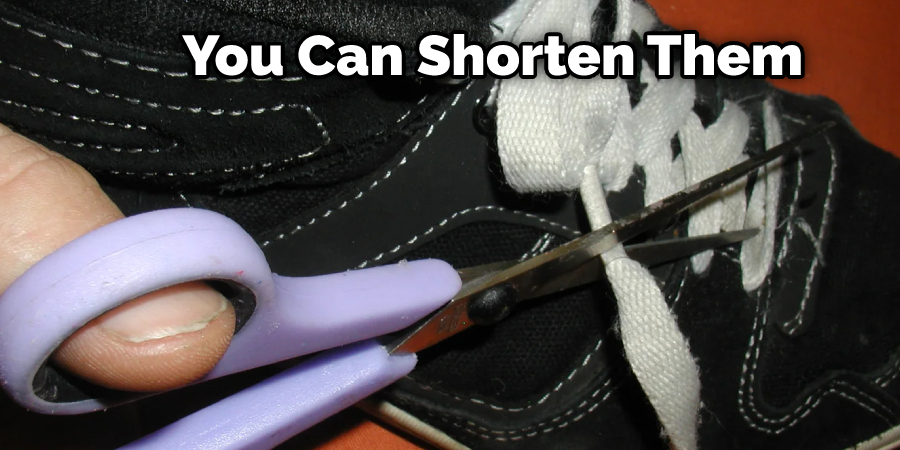
Finding the right way to lace your running shoes is important for ensuring a comfortable and supportive fit. Keep reading for more information about how to lace running shoes for flat feet.
You Can Check It Out to Make Sandals Fit Narrow Feet
How to Lace Running Shoes for Flat Feet Step by Step Guide
Step 1: Wide Forefoot Lacing Technique:
The first technique is the Wide Forefoot Lacing Technique. This technique is good for those with wide feet or those who experience discomfort in the forefoot. To do this, start by threading the laces through the bottom eyelets on both shoes. Then, cross the laces over the top of the foot and tie them together.
Step 2: Wide Feet in General Lacing Technique:
If you have wide feet in general, not just in the forefoot, there is a second technique that you can use. This technique is called the Wide Feet in General Lacing Technique. To do this, start by threading the laces through the bottom eyelets on both shoes. Then, lace them up as normal, but skip the last two eyelets on each shoe. This will create a large gap in the lacing pattern, stretching out the shoes and making them more comfortable.
Step 3: Ankle Lacing Technique:
If you have flat feet and also experience discomfort in your ankles, there is a third technique that you can use. This technique is called the Ankle Lacing Technique. To do this, start by threading the laces through the bottom eyelets on both shoes. Then, lace them up as normal, but skip the last two eyelets on each shoe. This will create a large gap in the lacing pattern, stretching out the shoes and making them more comfortable.
Step 4: High Arches Lacing Technique:
If you have high arches, you will need to use a different lacing technique. To do this, cross the laces over the top of the foot instead of under it. This will help to support the arch and keep it in place.
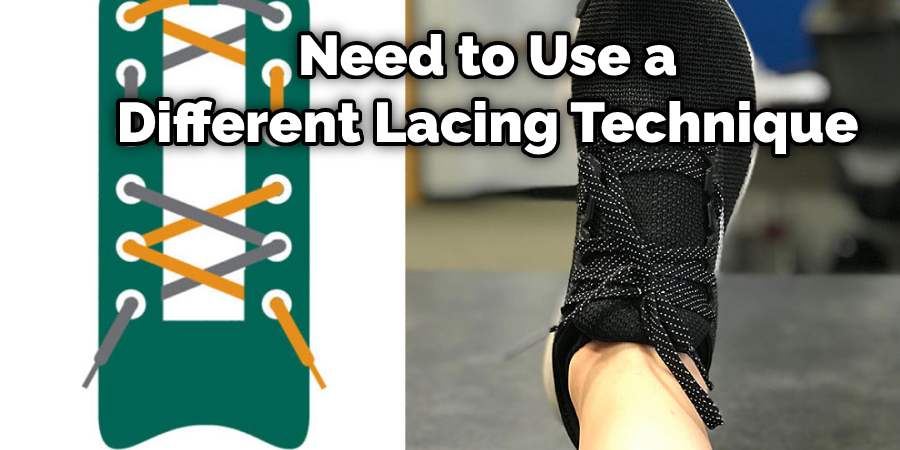
Step 5: Too Tight on Top Lacing Technique:
If the top of your shoe feels too tight, you can loosen it up by using the “too tight on top” lacing technique. To do this, untie the laces and retie them to create more space at the top of the shoe. This will give your foot more room to move and be more comfortable to wear.
Step 6: High Midfoot Lacing Technique:
This method is similar to the previous one, but instead of crossing the laces over the top of the shoe, you will lace them underneath. First, make a loop with one lace and thread it over the other lace. Then, take the loop and put it over the top of the shoe. Next, tuck the end of the lace underneath the loop and pull it tight. Finally, tie a knot in the laces.
This technique is good for runners with flat feet because it supports the arch. It also helps to keep the foot in place, reducing the risk of injuries.
Step 7: Lacing Techniques for Better Performance:
Several lacing techniques can be used to help improve your performance when running. One such technique is the Heel Lock, which helps keep your heel in place and minimizes any rubbing or irritation. Lace-up your shoes as normal, but leave a small loop of slack at the end of the laces.
Step 8: Heel Slipping Lacing Technique:
If you are experiencing heel slipping when running, a lacing technique can help prevent it. This technique is called the LockDown Lacing Method. To do this, lace your shoes as normal, but make sure that you pull the laces tight across the top of the shoe. Next, take the slack created in Step 7 and tie it tightly around the laces near the ankle. This will help keep your heel in place.
Step 9: Toe Pains Lacing Technique:
If you are experiencing toe pain, there is a specific way to lace your shoes that may help. First, loosen the laces all the way. Second, cross the laces over the top of the toes and tie them together. Finally, re-tighten the laces. This technique takes some extra time to do, but it may help to reduce toe pain.
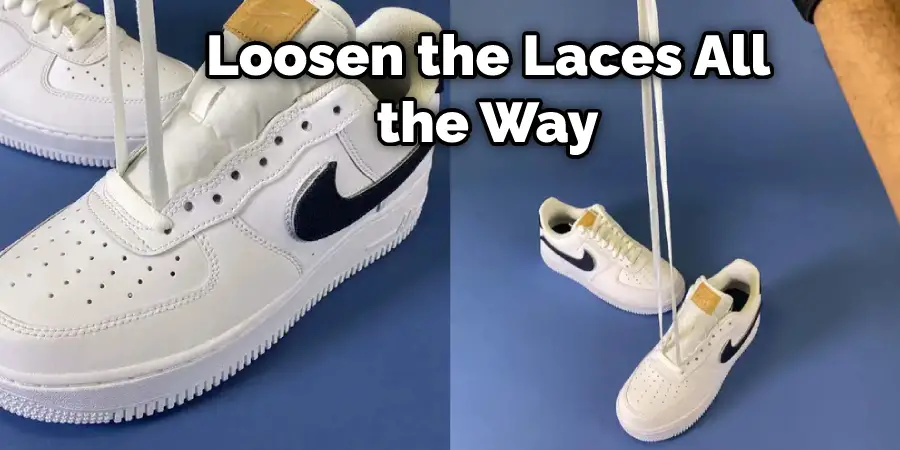
Step 10: Swollen Feet Lacing Technique:
There is a technique for swollen feet that can help reduce the amount of swelling. This technique should only be used if you have trouble fitting your regular laced shoes on your swollen feet.
To do this, cross the laces in the middle of your foot (right over left and left over right). Then, tie them like normal. This will create a “V” shape on top of your foot.
The laces will put pressure on the sides of your feet, which can help reduce the amount of swelling. This technique should only be used if you are having trouble fitting your regular laced shoes on your swollen feet.
Step 11: One Area Too Tight Lacing Technique:
This technique is used if one area of your shoe feels too tight. Reach down and loosen the laces in that area, then retie them, snug but not tight. This should relieve the pressure in that area.
Step 12: Flat Feet Lacing Technique:
The last step is to tie off the laces by pulling the laces through the loop on the opposite side. This completes the flat feet lacing technique. You can now go for a run and feel your shoes firmly in place! If you want to know more about how to lace running shoes for flat feet, keep reading.
Making a Perfect Knot
Making a perfect knot takes some practice, but it’s definitely worth the effort. The key is to make sure all the slack is out of the line before you start tying the knot. Here’s how to do it:
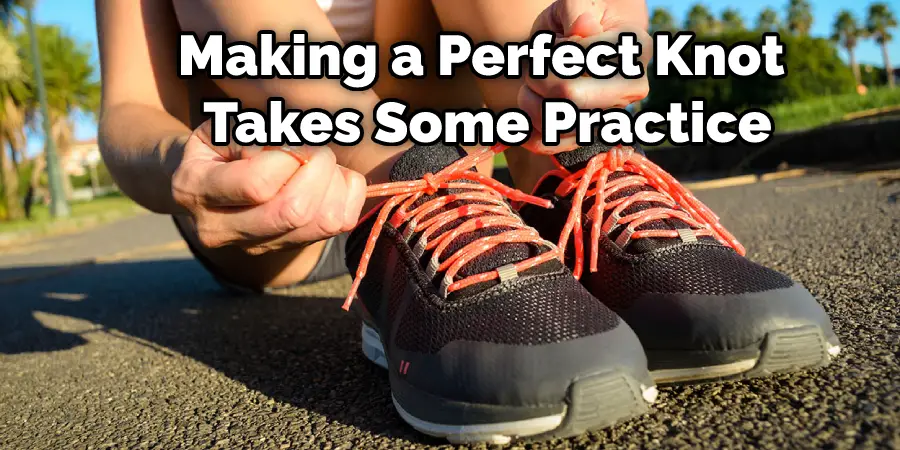
1. Ian Knot
The Ian Knot is a knot used to secure a rope to a post or another object. It is also known as the Tautline Hitch. The Ian Knot comprises a clove hitch and two half hitches.
2. Surgeon’s Knot
The Surgeon’s Knot is a type of knot used to secure two ropes together. It is also known as the Double Fisherman’s Knot. The Surgeon’s Knot is made up of two overhand knots.
3. Ian’s Secure Knot
Ian’s Secure Knot is a knot used to secure a rope to a post or another object. It is also known as the Tautline Hitch. Ian’s Secure Knot is made up of two half hitches. For more tips on how to lace running shoes for flat feet, keep reading!
Frequently Asked Question
Does Lacing Really Work?
There is a lot of debate over whether or not lacing your running shoes correctly actually works. Many people seem to think that it does, while others believe that it doesn’t make much of a difference. So, I decided to research the topic and found evidence to suggest that lacing your shoes correctly can help improve your running form and reduce the risk of injury. However, more research is needed to confirm this. So, the answer to the question “Does lacing work?” is, unfortunately, we don’t know yet.
What Are the Benefits of Wearing a Pair of Running Shoes with Lacing for Flat Feet?
There are a few benefits of wearing a pair of running shoes lacing for flat feet. First, lacing your shoes correctly can help to improve your running form and reduce the risk of injury. Second, it can help improve the stability of your foot and ankle, which can be beneficial for people with flat feet. Finally, it can also help improve the overall comfort and fit of your shoes.
What Are the Disadvantages of Wearing a Pair of Running Shoes with Lacing for Flat Feet?
There are a few disadvantages of wearing a pair of running shoes lacing for flat feet. First, it can be more difficult to lace your shoes correctly than simply tie them. Second, it can be uncomfortable to wear shoes that are laced up tightly. Third, it can be difficult to find shoes specifically designed for people with flat feet, which means that you may have to go through a lot of trial and error before finding a pair that works for you. Finally, lacing your shoes correctly can be time-consuming and may take some practice before getting them right.
You Can check it Out to Keep Sand Out of Running Shoes
Conclusion
If you have flat feet, follow these simple tips to help ensure that your shoes fit properly and provide the support you need. This will help reduce pain and discomfort while running, but it can also help prevent injuries in the future. So lace up those sneakers and hit the pavement! Thanks for reading our post about how to lace running shoes for flat feet.
You Can check it Out to Lace Shoes for Plantar Fasciitis

